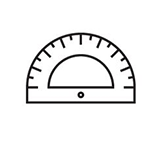천산갑화석(Manidae Replica)-20121025-3 
판매가 300000
할인판매가 300,000원 총 할인금액 원 (모바일할인금액 원)
적립금
- 0원(0%)
-
원 %
-
원 %
-
원 %
-
 원 %
원 %
-
원 %
-
원 %
-
원 %
-
원 %
| 국내/해외배송 | |
|---|---|
| 배송비 방법 | 택배 |
| 배송비 | 4,000원 (50,000원 이상 구매 시 무료) |
| 수량 |
|
| 상품 정보 | 가격 | 삭제 |
|---|---|---|
| [총 상품금액(수량)] 0 (0개) | ||
일반명 : 천산갑화석(Manidae Replica)
학 명 : Eomanis waldi
지질시대(Age) :신생대 중기에오세(Middle Eocene, About 47 My)
원산지(Locality) : Messel Pit, Darmstadt Germany
크 기 : Slate 38x22 cm
Scientific classification
동물계(Kingdom: Animalia)
척삭동물문(Phylum: Chordata)
포유강(Class: Mammalia)
유린목(Order: Pholidota)
천산갑과(Family: Manidae)
메셀 화석발굴지역에서는 전형적으로 열대아시아나 아프리카에서 나타나는 이국적 동물들도 발굴된다. 에오마니스(Eomanis;로마서라는 의미)는 현대 유린목 천산갑과와 매우 유사하게 생겼지만, 에오세의 천산갑은 골질비늘 조직의 분포가 현생의 것보다는 적게 분포되어있어 발과 꼬리부분에는 다른 포유류처럼 털로 덮여있었다. 에오마니스(Eomanis)로 인하여 전형적인 천산갑류의 형태학적 진화계통도는 상당히 오래 전으로 거슬러 올라가는 것을 입증하게 된다. 주로 곤충을 주식으로 하였으나 화석의 위 속에서 발견되는 식물성분들로 인해 초식도 병행하였을 것으로 추측하기도 한다.
Observations: The fauna of the Messel Pit contains an exotic element typical of tropical Asia or Africa: a relative of the living pangolins. Eomanis look very like a modern representative of this order, but its scale cover is much less extended. The arms and part of the tail was not protected and the animal simply held fur like many other mammals. In any case, Eomanis proves that the typical pangolin-like morphology was attained quite early in mammal evolution. It was a relative small animal, about 50 cm long. The content of its stomach has been analysed thanks to few well preserved specimens: like its modern relatives, it fed on insects, but also vegetable matter has been recovered in its belly. It was swallowed by mistake or it was simply a complement of its diet?
Eomanis("원시 귀신")는 지구상에서 가장 오래된 천산갑화석으로 유럽의 중기 에오세에서 발견되었다. 메셀지층에서 발견된 화석의 크기는 50cm로 긴 동물이며 현재의 천산갑(pangolins)와 거의 유사하다.
그러나, 현대의 천산갑(pangolins)과는 다르게 화석 천산갑은 꼬리와 다리에 껍질형태의 갑옷(bear scales)이 없다. 완벽하게 보존된 메셀 화석표본의 위 내용물에 따르면,에오마니스(Eomanis)는 곤충과 식물등을 모두 먹었다. 화석표본은 현재의 작은개미핥기(Eurotamandua)의 모습에 비늘이 없는 형태와 매우 유사한 모습이다. 그러므로 연관이 있어 보인다.
Eomanis ("primitive ghost") is the earliest known true (and scaled) pangolin from the Middle Eocene of Europe. Fossils collected from the Messel Pit, Germany, indicate that this 50 cm long animal was rather similar to living pangolins. However, unlike modern pangolins, its tail and legs did not bear scales. According to the stomach contents of the excellently preserved Messel specimens, Eomanis’ diet consisted of both insects and plants. Its contemporary was the related, albeit scale-less, anteater-like Eurotamandua.
[참고]
1875년경 고생물학자 루돌프 루트비히는 처음으로 악어화석 일부를 발견한다. 덕분에 많은 학자들에 의해 다양한 표본들이 발견되지만 화석이 발견되는 층의 암질이 습기가 변화하면 급속하게 파괴(붕괴)되는 관계로 보존할 수가 없었다. 이후 1960년경 합성수지를 이용하는 방법이 시도 되면서 현재의 표본보존 방안이 완성되었다. 이 방법은 제일먼저 .화석이 발견되면 표면이 마르기 전에 빨리 발굴한 후 그 위에 합성수지를 넓게 바른다. 그러면 오일셰일퇴적암 암질속에 있던 화석은 합성수지에 고착되어진다. 이후 합성수지 판을 회수하여 2차 발굴을 완성하고 합성수지의 외곽을 절단하여 완성된다.
이런 관계로 메셀화석 표본을 보면 마치 레플리카(Replica=진품화석을 복제하여 전시 연구하는 방식의 표본제작 방식)로 만든 가짜화석(복제본)처럼 보인다. 그러나 표본을 자세하게 관찰하면 화석부분은 수지가 아니아 실물화석이란 것을 알 수 있다. 이러한 방식은 화석의 보존에서 종종 사용하는 특수공법이다.

















 확대보기 및 상세정보
확대보기 및 상세정보